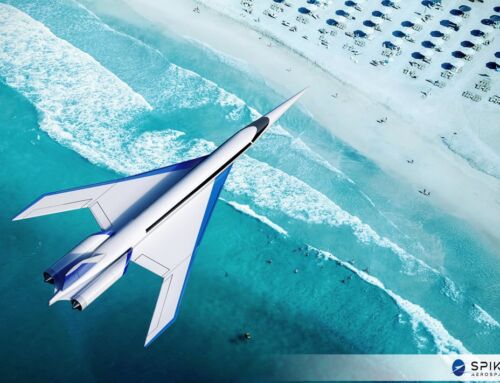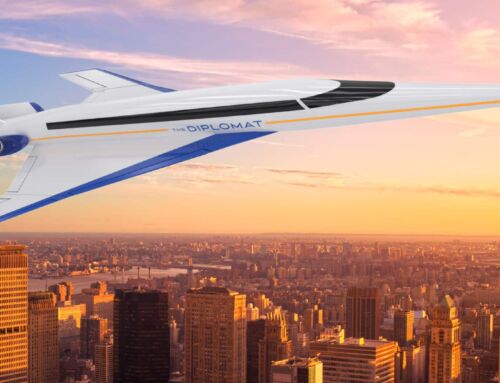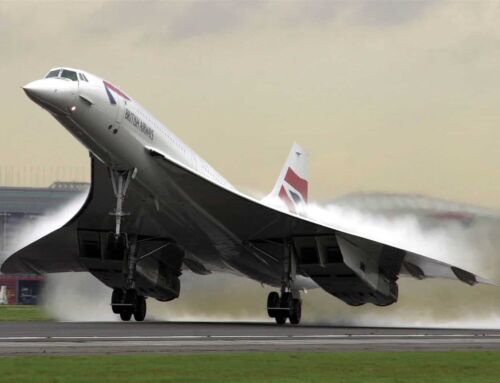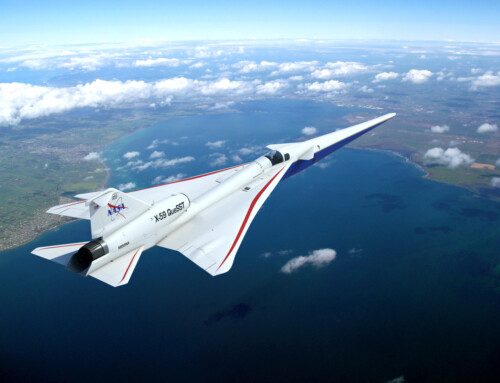
November 22, 2013 — As incredible as the Concorde was, the sonic booms created by its supersonic flights were so disruptive that most countries restricted or completely prohibited the aircraft from flying over land.
The sonic boom, at its worst, would be heard as a very loud thunder clap that was right overhead. The force of the boom rattled windows and loosened roof tiles. But even when the sonic boom sounded like a “softer” distant thunder clap, it was distracting to people and caused disruption of sleep and interruptions in activity.
Imagine that you are driving on your way to work, and with clear skies overhead, you suddenly hear the sound of thunder. Your immediate responses are most likely surprise, shock, and an instinctive search for the source. Being caught by surprise in certain situations is rather annoying, and in others, potentially dangerous.
In 1964, the FAA and NASA conducted a six-month sonic boom research project in Oklahoma City – without warning residents beforehand. The experiment consisted of eight sonic booms, every day, for six months. 15,000 complaints and a class action lawsuit were filed. The government lost on appeals. Great idea, guys, just brilliant.
When the Concorde was originally designed, in the early 1960s, governments and airlines around the world lined up to place orders. The plane did an around-the-world publicity trip, and was well-received. But as awareness of the sonic boom effect grew, almost every country banned the aircraft. Only the US, Great Britain, and France allowed the Concorde to enter their airspace, and then only to cities in close proximity to the ocean – NYC, London, Paris, and Washington, DC.
The Concorde was specifically designed for supersonic flight (specifically, Mach 2) and was very fuel-inefficient at subsonic speeds (less than Mach 1). Unfortunately, it was thus not feasible to fly at supersonic speed over water and then at subsonic speed over land.
So, two questions. First, what causes a sonic boom? Second, how do we eliminate it?
What causes a sonic boom?
When any object moves, it creates waves in front of and behind it. Think of the waves that a boat creates at its bow and stern. In front, the waves are compressed together as the boat sails forward. Behind, the waves spread out away from the boat. In this case, you only see the waves on the surface of the water, and it appears two-dimensional.
Similar principles are at play with aircraft. In front of the nose of a plane, air is pushed together and compressed as the aircraft flies forward. Behind the plane, the air creates waves that radiate out and away in the shape of a cone – three-dimensionally.
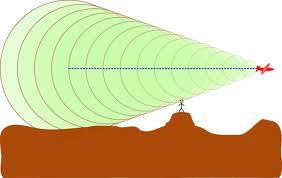
When an aircraft flies at subsonic speeds, the nose of the aircraft is always behind the waves in front of the plane – much as the front of a boat is always behind the waves ahead of its bow.
Things get interesting, and complicated, when you fly faster than the speed of sound – supersonic flight. The nose of a supersonic aircraft pushes ahead of its forward waves. These waves get in the way of the airplane, causing compression which results in a shock wave. Actually, this creates two shocks, one forming as the aircraft passes the front of the wave and then another as it leaves the wave. The shock wave generated stays mostly behind the aircraft, and radiates out in a cone.
When that shock wave reaches the ground, any person within earshot will hear a double thunder clap. This shock wave will follow the plane as long as it flies at supersonic speeds. The effect doesn’t just occur once as the plane reaches and passes the speed of sound. Observers on the ground, along the plane’s entire flight path, will hear the sonic boom one to 60 seconds after the aircraft passes overhead.
Surprisingly, it doesn’t matter how high the plane flies – a shock wave will still be heard and felt on the ground. It becomes slightly less perceptibly intense the higher the aircraft travels, but not by much.
The intensity and range of a sonic boom depends on a lot of factors, including speed of the aircraft, temperature, humidity, and ground surface conditions. It is also affected by what the aircraft is doing: climbing, descending, turning, accelerating, etc.
For aerospace engineers, this is a serious and rather annoying problem, er, challenge.
How do we eliminate the sonic boom effect?
NASA, the US Air Force, and a number of private companies have researched sonic booms for the last 40+ years. While they have found some ways to reduce the boom, the products of their efforts are still too loud, and do not meet FAA regulations regarding sonic booms. Some innovations that have come from this research include:
- Extending a plane’s nose far ahead of the fuselage, which seems to stretch out waves and thus reduce sonic booms
- A longer, thinner fuselage, or a specially-shaped fuselage, which also seems to reduce the shock wave slightly
- Adding grooves along the bottom of the aircraft, which was found to reduce shock waves by 1/3 – but still not enough to meet regulations
- Research currently being done on redesigning air inlets to jet engines
Eliminating sonic booms or reducing them to acceptable levels is a huge challenge. Solving this problem is necessary before supersonic aircraft can fly to populated areas, like those between NYC and Los Angeles or Paris and Rome. Some companies are predicting that we won’t see supersonic airliners again before 2030 or 2040.
However, there are a number of significant efforts underway to build supersonic business jets, which – due to their smaller size – is believed to create far less of a sonic boom. This is the opportunity on which Spike Aerospace is focused.

